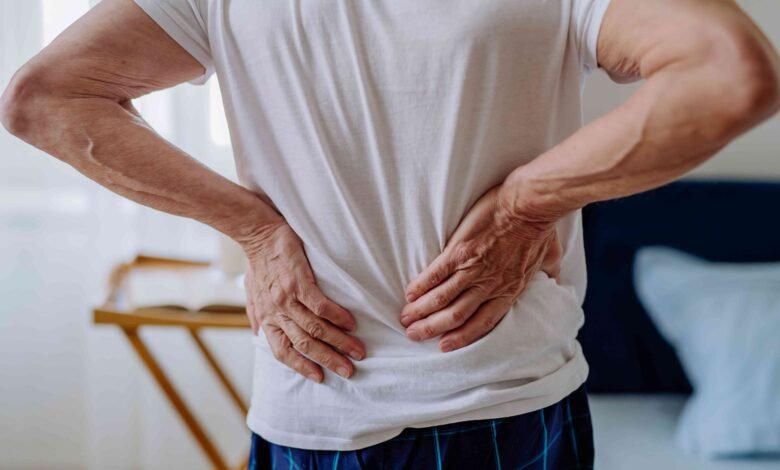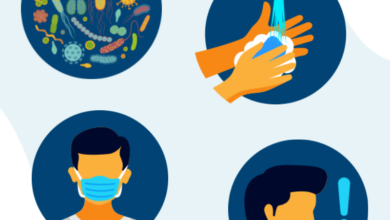
Lower Back Pain: Causes and Treatment
Lower back pain is a prevalent issue affecting millions of individuals worldwide. It can result from various factors and can significantly impact daily activities and quality of life. Understanding the causes and exploring treatment options, including medications like “Pain O Soma 350,” can provide much-needed relief.
Common Causes of Lower Back Pain
- Muscle or Ligament Strain
- Sudden movements, lifting heavy objects improperly, or engaging in strenuous activities can strain the muscles and ligaments in the lower back. This strain often leads to painful muscle spasms.
- Herniated or Bulging Discs
- Discs act as cushions between the vertebrae in the spine. When these discs become herniated or bulge out of place, they can press on nearby nerves, causing significant pain.
- Arthritis
- Osteoarthritis, a common form of arthritis, affects the lower back by causing the cartilage to wear down, leading to pain and stiffness. In some cases, spinal stenosis can occur, narrowing the space around the spinal cord.
- Skeletal Irregularities
- Conditions like scoliosis, an abnormal curvature of the spine, can lead to chronic lower back pain. These irregularities often become more pronounced with age.
- Osteoporosis
- This condition causes bones to become brittle and porous, increasing the risk of fractures, particularly in the spine, which can result in lower back pain.
Symptoms of Lower Back Pain
- Persistent Ache: A constant, dull ache in the lower back.
- Sharp Pain: Sudden, sharp pain that can limit movement.
- Radiating Pain: Pain that spreads down the legs, often indicative of nerve involvement.
- Muscle Stiffness: Difficulty moving due to stiffness in the lower back muscles.
Treatment Options
- Medications
- Over-the-counter pain relievers like ibuprofen or acetaminophen can help reduce inflammation and pain. For more severe pain, doctors may prescribe muscle relaxants or medications like “Pain O Soma.”
- Physical Therapy
- A structured physical therapy program can strengthen the muscles supporting the spine, improve flexibility, and promote proper posture. Techniques may include stretching, strength training, and aerobic exercises.
- Hot and Cold Therapy
- Applying heat can relax tense muscles and improve blood flow, while cold packs can reduce inflammation and numb the affected area. Alternating between hot and cold therapy can be particularly effective.
- Manual Therapies
- Chiropractors and physical therapists may use spinal manipulation or massage therapy to alleviate pain and improve spinal function. These techniques can provide significant relief for many individuals.
- Lifestyle Modifications
- Maintaining a healthy weight, practicing good posture, and avoiding activities that strain the back are essential steps in managing and preventing lower back pain. Regular exercise, particularly activities that strengthen the core muscles, can provide long-term benefits.
When to Consider “Pain O Soma”
“Pain O Soma” (carisoprodol) is a muscle relaxant that works by blocking pain sensations between the nerves and the brain. It is typically prescribed for short-term use in conjunction with rest and physical therapy to treat muscle pain and discomfort.
- Acute Muscle Spasms: “Pain O Soma” is effective in relieving acute muscle spasms associated with lower back pain.
- Post-Injury Relief: After an injury, “Pain O Soma” can help manage pain during the recovery process.
- Chronic Pain Management: For chronic lower back pain, “Pain O Soma” may be used under a doctor’s supervision to provide intermittent relief.
Precautions and Considerations
- Short-Term Use: “Pain O Soma” is generally recommended for short-term use due to the risk of dependency and potential side effects.
- Medical History: Inform your doctor about your medical history, especially if you have a history of substance abuse, liver disease, or kidney disease.
- Possible Side Effects: Common side effects include drowsiness, dizziness, and headache. More severe side effects should be reported to a healthcare provider immediately.
Conclusion
Lower back pain is a common and often debilitating condition, but with the right approach, it can be managed effectively. Understanding the causes and exploring various treatment options, including medications like “Pain O Soma,” can provide significant relief. Always consult with a healthcare professional to determine the best course of action for your specific situation and to ensure the safe and effective use of any medications. By combining medical treatments with lifestyle changes and preventive measures, individuals can improve their quality of life and reduce the impact of lower back pain.



